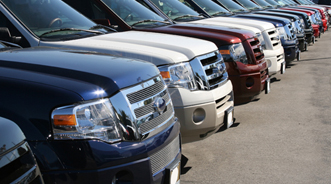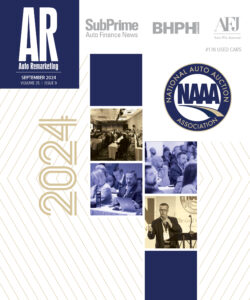Used-Car Impact of 16M New-Model SAAR That’s ‘Here to Stay’

Autodata Corp. determined the new-vehicle SAAR in August came in at 16.09 million units, marking the first time it climbed to that level since October 2007. Since a top executive at General Motors insisted the high SAAR level is “here to stay,” Auto Remarketing questioned industry analysts to find out what kind of impact that sales volume might have on the used-vehicle market.
Karl Brauer, senior analyst for Kelley Blue Book, discussed the immediate implications if this trend is in fact going to be as Alan Batey projected. Batey — the senior vice president for U.S. sales and marketing at GM and the global brand chief for Chevrolet — made the following assertion when the automaker discussed its August sales performance earlier this week.
“If new-car sales stay above 16 million it will require many current drivers to sell or trade in their existing vehicle,” Brauer said. “This will result in a constant flow of used cars entering the market, but at a relatively even rate versus a spike.
“Given the age of the current U.S. fleet, which is more than 11 years old, many used-car shoppers will be looking to step into a newer car, but not necessarily a ‘new’ car,” Brauer continued. “As such, there will be plenty of continued demand for used cars even as new-car sales rise.
“Used-car values may drop gradually in the coming years, but they should remain relatively stable overall,” he went on to say.
When questioned during a conference call, Batey told participants that he initially thought the new-vehicle SAAR would climb above 16 million sometime during the fourth quarter. The GM executive then shared his thoughts as to why it came last month.
“It’s a little earlier, but not a big surprise, given what’s going on in the economy, the age of fleet, and again keep in mind job stability. That’s a key element in the purchase decision: Will I have a job tomorrow? People are becoming much more secure in the job,” Batey said according to a transcript of GM’s call posted by SeekingAlpha.com.
More confidence displayed by potential buyers in keeping their jobs likely makes them more apt to sign a finance contract. Experian Automotive reported earlier this week that 84.5 percent of buyers purchased their vehicle with loans or leases in the second quarter.
It’s that availability of financing that prompted Edmunds.com senior analyst Jessica Caldwell to question whether potential buyers are opting for a new model even if a used vehicle initially was on their radar.
“On average, new car buyers in August paid one of the lowest new car interest rates in history: 3.9 percent. This is truly a purchase driver,” Caldwell said. “Even though consumers are generally paying higher prices for cars due to increased content (and, in some cases, tight supply), the low interest rate is generating monthly payments on par or less than what they have paid in the past.
“There are so many new-car interest subsidies that I think when you do the math for someone financing a vehicle, say 0 percent for five years, it makes new cars really favorable so that’s going to have an effect on used cars,” Caldwell continued.
“Used-car interest rates are down, but it’s hard to compete when automakers are subsidizing at such a pervasive rate, 0 percent, 0.9 percent, 1.9 percent, which makes monthly payments quite inexpensive,” she went on to say.
With affordable notes being written in the F&I office and a calendar quirk that pushed the end of August into the middle of Labor Day weekend, franchised dealers sold 1,503,151 new vehicles, according to the tally from Autodata. The total is 17.0 percent higher than August of last year and the highest amount since May 2007.
AutoNation was among the retailers that turned plenty of new metal in August. The largest of the publicly traded dealer groups reported that it moved 30,582 new models last month, an increase of 32 percent as compared to August of last year.
The company said its same-store retail new-vehicle unit sales in August were 29,221 vehicles, an increase of 26 percent year-over-year. Total retail new-vehicle unit sales for AutoNation’s operating segments were as follows:
—9,308 for domestic, up 34 percent year-over-year
—16,173 for import, up 29 percent year-over-year
—5,101 for premium luxury, up 37 percent year-over-year
Did used-car managers at AutoNation and other stores just twiddle their thumbs over the weekend while the new-car side of their showrooms hummed along? Not necessarily because as Auto Remarketing reported here on Wednesday, August used-vehicle sales increased 5.6 percent, according to CNW Research.
On Thursday, CNW president Art Spinella followed up with more analysis saying last month “was a convergence of factors — all good — leading to a spectacular August sales report.”
Spinella began by saying, “One, the long weekend. Many dealers included holiday sales into August even though they were made in September. Two, small and medium businesses feeling better about their economy bought replacement vehicles in record numbers.
“Three, stock market gains added 2 percentage points to the cash-sales numbers with gains from stocks being partially cashed in to buy durable goods, notably luxury models,” he continued. “Four, dealers were wheeling and dealing and getting mid- to lower-FICO shoppers prime-FICO low-interest loans.”
With automakers evidently upbeat about their sales prospects and the finance market full of cash to lend to all kinds of potential new-car buyers, should independent dealerships and franchised stores with significant used-vehicle operations be worried about what’s ahead? Alec Gutierrez, senior analyst for Kelley Blue Book, provided some clarity for the near term and beyond.
“Used-vehicle sales volume and prices should not be significantly impacted by the continued growth in new-vehicle sales. Since new vehicle sales growth has come gradually and has not been dependent on potentially detrimental practices such as high fleet sales or incentives, we should only expect a modest and gradual decline in used-vehicle values over the coming years,” Gutierrez said.
“Looking beyond the next year or two, we could see more substantial declines in used-vehicle values if we continue to see the lease penetration rate continue to rise, along with rising sales volume (currently at close to 25 percent of retail volume),” he continued.
“Used-vehicle sales volume should see little to no impact overall since consumers remain focused on fuel efficiency and their overall budget, which will make used vehicles an increasingly attractive alternative as resale values continue to ease,” Gutierrez went on to say.
Nick Zulovich can be reached at nzulovich@autoremarketing.com. Continue the conversation with Auto Remarketing on both LinkedIn and Twitter.

 View The Latest Edition
View The Latest Edition

